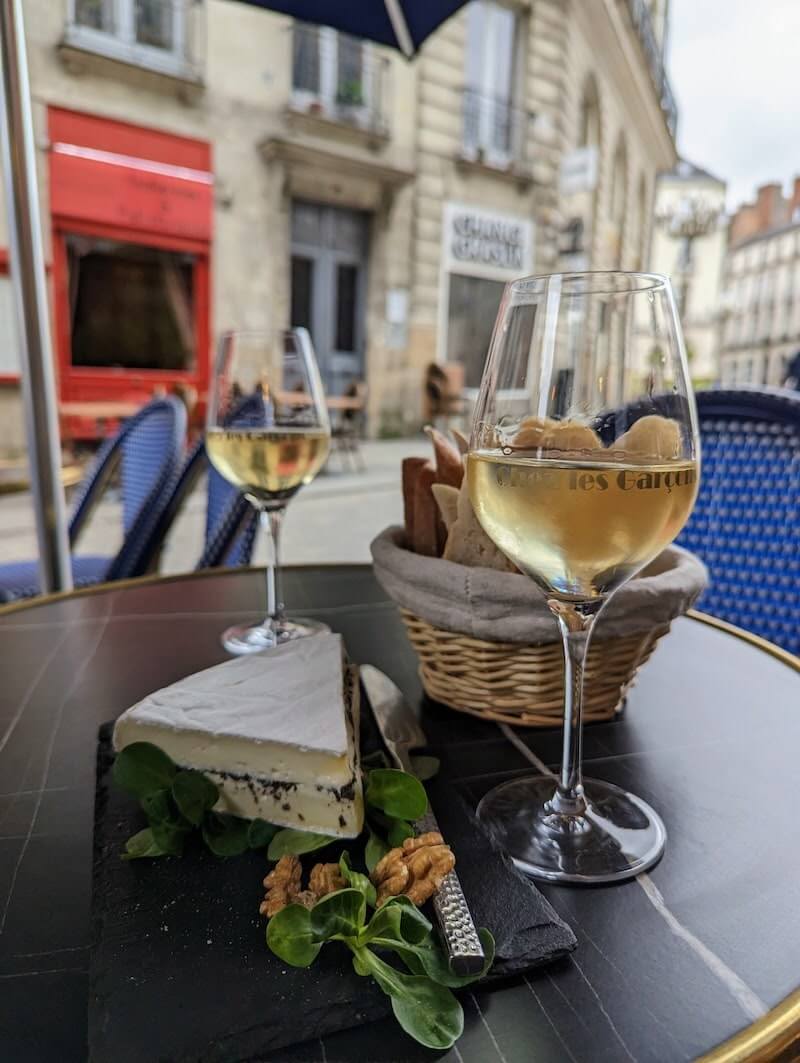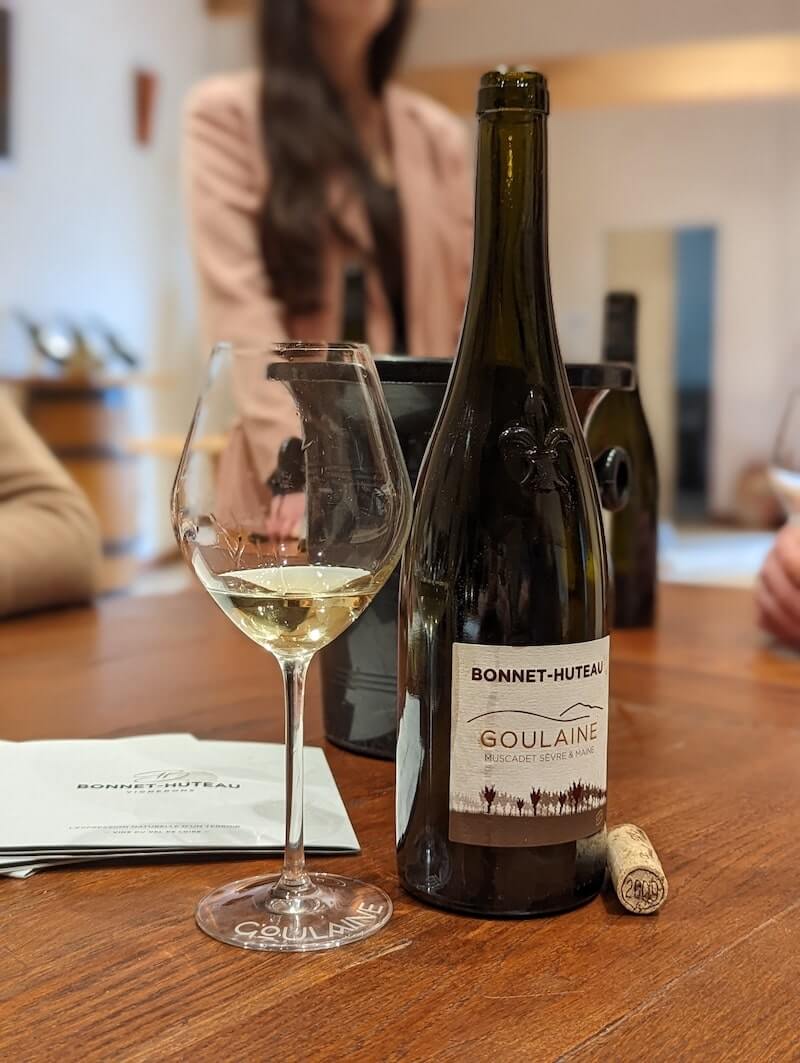Loire Valley Wine Guide: Fall in Loire Love

Fresh, Fruity, Floral and Fair is what Loire Valley wine is all about. And today I want to take you on a journey throughout this hidden gem of a wine region.
In May 2023 I was lucky enough to visit France’s Loire Valley on a sponsored wine trip which you can read about here. I learnt so much about the region, its wines, the food, the people and I simply can’t wait to share it all with you. Below you’ll find my guide to the Loire Valley wine region and what you can expect from the amazing wines that come from this part of the world.
So sit back, grab a glass of Loire wine and enjoy!
TL;DR
Loire Valley wine is gaining in popularity for consumers and professionals alike. This is due to the wines being made with moderate alcohol, refreshing acidity and minerality which really show a pure expression of varietal and terroir unmasked by oak. Plus they are ideal food wines and excellent value!


My Loire Valley Wine Guide:
Where is the Loire wine region?
The Loire Valley is in France. Tours, one of the main cities in the region is only 1 hour by train south of Paris. Nantes, which is on the coast, is about a 3.5 hour train ride from Paris. The region sits either side of the Loire River, which is the longest river in France.
Because the region stretches horizontally across the country, it means it is the longest and most diverse vineyard area in France. It is also France’s third largest producer of appellation wines.
Loire Valley Map
Take a closer look at the 800km Loire Valley wine route with this fantastic Loire Valley wine region map from InterLoire.

The subregions of the Loire Valley
There are four key subregions of the Loire Valley and over 60 AOP’s (Appellations d’Origine Protégée). The four subregions are:
- Nantais
- Anjou-Saumur
- Touraine
- Centre-Loire
Altogether there are about 42,000 hectares of vines in the region.
The Terroir of the Loire Valley
Terroir is an important French wine term which helps to explain the environmental factors which impact a crop. So when it comes to grapevines, the terroir is all about the soil, climate, the grape variety and the people.
The soils
One of the biggest things I learnt on my trip to the Loire was the importance of the different types of soils in the region. Like its wines, the soil types are diverse throughout the region.

In the Pays du Nantais you’ll find igneous and metamorphic rock from the Massif Armoricain – gneiss, mica schists, greenstone and granite.
In Anjou, also from the Massif Armoricain you’ll find mainly slate, sandstone and carboniferous schists alongside volcanic rock. These kinds of soils can retain or reflect the suns heat and they also affect drainage.
In Saumur and Touraine you’ll find tuffeau limestone, sand and siliceous clay from the Paris Basin. It’s these soils which are perfect for making bold-flavored zesty white wines.
And that is just brushing the surface! There is such a wide variety of soil types throughout the region and they all impact the grapes grown and ultimately the wine that is produced from the region.
One of the really fascinating tastings we did while in the Pays du Nantais at Domaine Bonnet-Huteau was tasting a muscat from the same vintage, made exactly the same way but from three different soil types. It was fascinating to taste the different flavours and textures that the different soils had on the end wine.

The climate
The Loire River and its many tributaries, alongside the oceanic influences of the Atlantic ocean all play a part in making Loire Valley wine what it is. There are a wide diversity of microclimates throughout the region, like the soils, which all impact the style and types of wines made in the region.
When I visited early May 2023, it was a mix of warm and cooler days with a bit of rain. Even in the rain it is a stunningly beautiful region to visit!
The grape varieties of the Loire Valley
As like many regions, you’ll find a wide range of grape varieties grown throughout the region (there are approximately 24 grape varieties found in the Loire). Below I have noted down some of the key varieties you’ll find in the Loire Valley:
- Melon de Bourgogne (used to make Muscadet)
- Folle Blanche
- Cabernet Franc
- Chenin Blanc
- Grolleau
- Chardonnay
- Côt (aka Malbec)
- Gamay
- Sauvignon Blanc
- Pinot Noir
The Loire is definitely the perfect destination for white and rosé wine lovers with 37% of production being white wine, 30% being rosé wine, 20% being red wine and 13% being sparkling wine.

Loire Valley Rosé
White wine is undoubtedly the focus in the region, however Loire Valley Rosé is definitely one to watch and get in your glass if you can.
I was lucky enough to spend a day in the home of Rosé d’Anjou and Cabernet d’Anjou (made from Cabernet Franc grapes) and it was one of my favourite parts of my trip.
The Rosé from Anjou has that perfect balance of fruit and acidity to make it so scrumptious and easy to drink. Not to mention they are super affordable.
When I visited Leduc Frouin in Anjou what I found super interesting was seeing the Grolleau vines and tasting Rosé made from them.
Grolleau is a French grape variety that you will probably only find in the Loire Valley. There is a ‘Grolleau Gris’ and a ‘Grolleau Blanc’. The vines are not susceptible to disease and they grow huge leaves and the bunches of grapes are big.
Loire Valley Muscadet
I fell in love with Muscadet on my trip to the Loire Valley. I think it is an amazing wine style which I could literally drink all year round with a variety of foods.
If you love:
- Love super fresh wines
- A good white wine to match your seafood, especially oysters
- Something a little out of the box
Then I’ll let you in on my secret… Get your lips around a glass of Loire Valley Muscadet!
These fresh and crisp dry white wines send my taste buds in a frenzy – that plus they are a match made in heaven for seafood.

A few hot tips for you about Muscadet:
- Muscadet is a wine style, not a grape (don’t confuse it with the Muscat grape)
- In fact, Muscadet is made from the Melon de Bourgogne grape variety, which locally is typically just referred to as Melon
- It can age incredibly well due to its excellent acidity – we tried a 2009 from Bonnet-Huteau which still had plenty of freshness
- Look for a bottle of Muscadet which says “sur lie” on it – this means it’s been aged on the lees (aka yeast cells – you can see a snippet of the process below) which makes it a more creamier textured wine

- I’ve found quite a few that really have a salty character to them, which I quite like. No wonder they’re the perfect oyster wine
- The Nantais region in the Loire is the World Capital for Muscadet as Pierre-Jean from Chateau du Cleary told us
Here’s just a few of the delicious Muscadet’s I have tried:







Loire Valley Chenin Blanc / Vouvray
After visits to Domaine de Rocheville and Vignoble Alain Robert in May, it’s safe to say I’m now an even bigger fan of Chenin Blanc, especially Chenin from the Loire Valley!
Hot tip – if you see “Vouvray” on a bottle, it is made from the Chenin Blanc grape.
Like the rest of the Loire Valley, soil types and terroir play a major part in creating great Chenin.
Chenin can come as a sparkling such as in a Crémant de Loire or a Sparkling Vouvray or it can be still.
Chenin can be dry (I looovvvee the dry Extra Brut bubbly made from Chenin) or it can be sweet.
It can also be consumed young and it can age extremely well too.
Vignoble Alain Robert in fact shared with us a sweet (doux) 2005 Chenin. Wow ?

And then there are the food matches. From cheese to scallops and even things like curry.
It’s a diverse and versatile grape variety and the Loire Chenin’s are bursting with freshness and deliciousness. Think flavours of green and red apples, citrus and minerality.
So why not get a bottle ready for the upcoming International Chenin Day on the 16th of June.
Fresh, Fruity, Floral and Fair
These four F’s represent many of the wines you’ll find from the Loire Valley. As the Loire is so diverse these four concepts help to explain the different styles and characteristics that Loire Valley wine exhibits.
Fresh – refers to the crisp, light and refreshing nature of Loire Valley wines. They are typically high in acidity, full of minerality and have plentiful citrus flavours.
Fruity – refers to wines that have lots of delicious fruit flavours and are easy-drinking and approachable.
Floral – the wines of the Loire typically have a distinctive delicate floral aroma.
Fair – many of the wines coming out of the region are produced by sustainable, organic, or biodynamic farming practices. The region is very focused on environmental and social responsibility.
Environmental Certifications
Another key thing to know about the Loire Valley is their importance put on sustainability.
Currently 80% of the vineyards have an environmental certification (e.g. organic, biodynamic, HVE) and they aim to be at 100% by 2030 – they don’t just care about today but their vineyards in the future. It’s definitely inspiring and fantastic to see as a collective they are all working towards this.
Where to buy Loire Valley wine in Australia?
It’s a long trip to get to the Loire Valley from Australia, and while I would 100% recommend visiting the region, the good news is you can get quite a few Loire Valley wines right here in Australia. There are about 3,000 producers in the Loire and currently about 90 export to Australia – with this number growing each year.
Here’s some links to check out (please note some of these links are affiliate links):
You’ll also find some Loire wines at independently-own bottle shops throughout the country.
